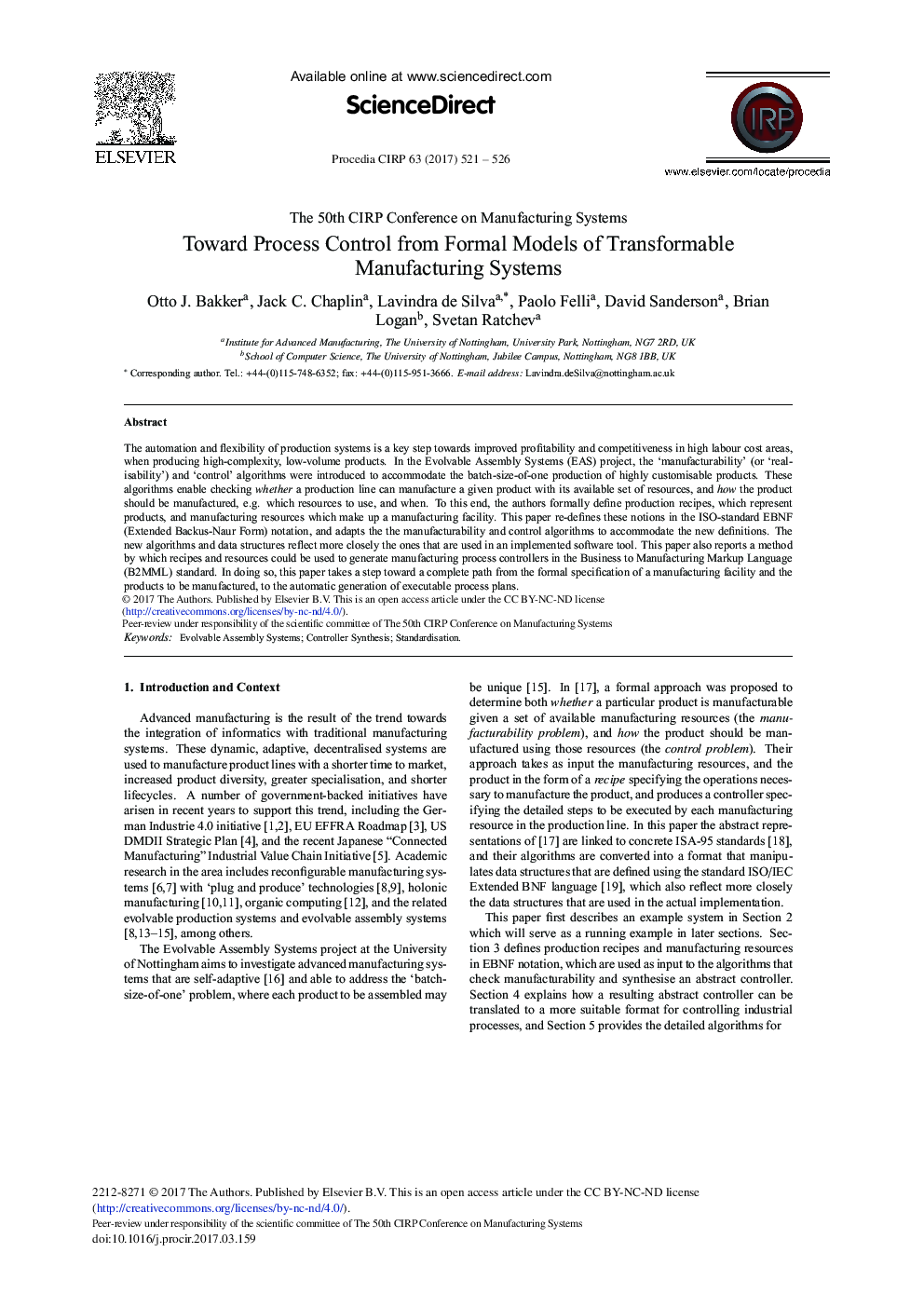| Article ID | Journal | Published Year | Pages | File Type |
|---|---|---|---|---|
| 5470205 | Procedia CIRP | 2017 | 6 Pages |
Abstract
The automation and flexibility of production systems is a key step towards improved profitability and competitiveness in high labour cost areas, when producing high-complexity, low-volume products. In the Evolvable Assembly Systems (EAS) project, the 'manufacturability' (or 'realisability') and 'control' algorithms were introduced to accommodate the batch-size-of-one production of highly customisable products. These algorithms enable checking whether a production line can manufacture a given product with its available set of resources, and how the product should be manufactured, e.g. which resources to use, and when. To this end, the authors formally define production recipes, which represent products, and manufacturing resources which make up a manufacturing facility. This paper re-defines these notions in the ISO-standard EBNF (Extended Backus-Naur Form) notation, and adapts the the manufacturability and control algorithms to accommodate the new definitions. The new algorithms and data structures reflect more closely the ones that are used in an implemented software tool. This paper also reports a method by which recipes and resources could be used to generate manufacturing process controllers in the Business to Manufacturing Markup Language (B2MML) standard. In doing so, this paper takes a step toward a complete path from the formal specification of a manufacturing facility and the products to be manufactured, to the automatic generation of executable process plans.
Keywords
Related Topics
Physical Sciences and Engineering
Engineering
Industrial and Manufacturing Engineering
Authors
Otto J. Bakker, Jack C. Chaplin, Lavindra de Silva, Paolo Felli, David Sanderson, Brian Logan, Svetan Ratchev,
